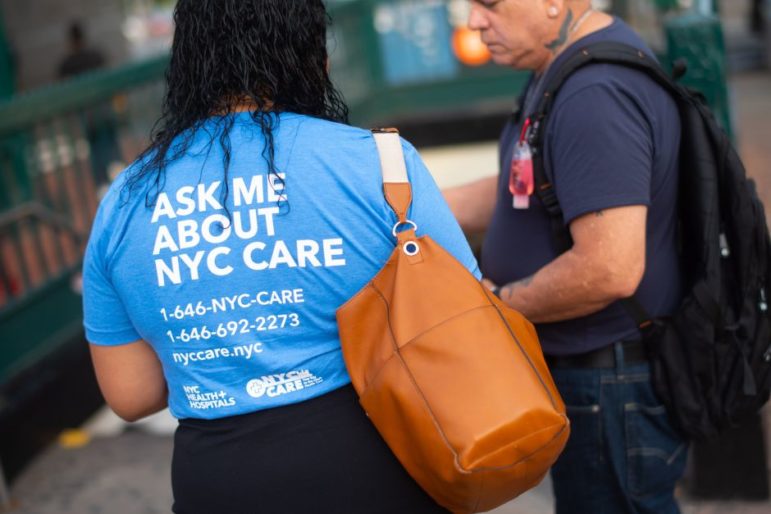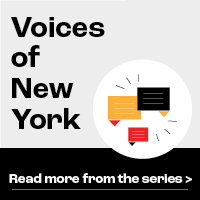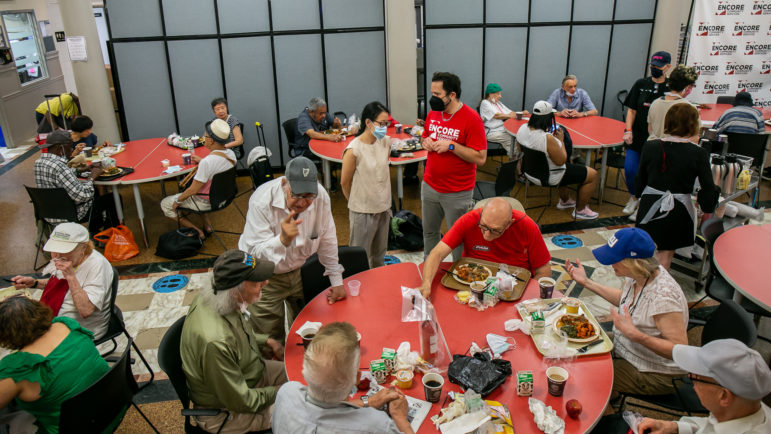
El Diario
NYC Care will be available in Brooklyn and Staten Island starting this month.Read the original story in Spanish at El Diario
Translated and condensed by Carlos Rodríguez Martorell
Every day at the break of dawn, while she is busy preparing tamales to sell on the streets of Sunset Park, Brooklyn, Teo Filángeles, 49, prays to have a profitable day but also that her congenital angioedema will not force her to go to the emergency room.
“It is a disease I live with. My face starts to swell. Stress is supposed to make it flare up. If I do not go to the doctor right away, the worst could happen,” said the Mexican immigrant.
Like 600,000 other New Yorkers, Filángeles does not have health insurance. Followed by Bushwick, her neighborhood of Sunset Park is home to the most Brooklyn residents lacking coverage who are also ineligible for health plans, 80 percent of whom are of Latino origin.
Filángeles, who has spent half of her life working in the streets of New York, says she know treating her sudden inflammations will be followed by hospital bills between $500 and $700, a hard blow for her pocket.
“People used to spend more. There are months in which I can barely cover my family’s expenses. Imagine the surprise of these medical bills when they come on top of that,” she said on a Thursday around 11 a.m., after selling her entire stock of tasty tamales on 4th Avenue.
But uninsured Brooklynites like Filángeles may be eligible for coverage under NYC Care, the city’s affordable healthcare program that’s expanding to the borough and Staten Island this month. Launched by the mayor in August, the initiative targets New Yorkers who either aren’t eligible or can’t afford insurance, and offers them access to care at NYC Health + Hospitals network of hospitals and public clinics, regardless of immigration status.
During its first phase in The Bronx, NYC Care reached its goal of 10,000 enrollments two months before its deadline. The city expects to offer coverage across the five boroughs by the end of 2020.
“NYC Care covers a significant need for New Yorkers who do not have or are not eligible for health insurance,” said Dr. Mitchell Katz, president and CEO of NYC Health + Hospitals.
Juana Cuade, 62, from Mexico, earns her living recycling plastic she collects on Brooklyn’s streets. She knows what it means to survive diabetes and several accidents without health coverage.
“Fortunately, if I have an emergency, they will see me and some plans will cover it, but the problem is in the medications and the check-ups. I asked the doctor if he can help me with a program. He told me that, in my particular situation, I do not qualify,” she said.
Cuade, who has lived in the city since 1990, has been able to build her life despite the ups and downs, but some unlucky accidents have complicated things.
“I fell down a few months ago, and the doctor saw me. A week later, I received a bill for over $2,000. I was able to demonstrate that I live with limited means, and I worked it out by taking temporary Medicare, but I have paid for the medication with my own earnings from recycling, grinding away on the streets every day,” she explained.
Approximately half of the city’s uninsured residents are either ineligible for any coverage option or unable to afford one under the Affordable Care Act, but they would qualify to enroll in NYC Care.
The success of the first phase of the NYC Care program in The Bronx has relied on its direct work with community organizations, a formula that it will replicate as it expands to other boroughs.
“This program helped a mother who has had ear pain for years connect to a specialist, as well as a person who was unable to pay for insurance to get a primary care physician,” said Marielle Kress, executive director of NYC Care. “It has helped thousands of patients in need of medication on the same day avoid going to the emergency room. We are excited to bring the same benefits to these two boroughs.”









